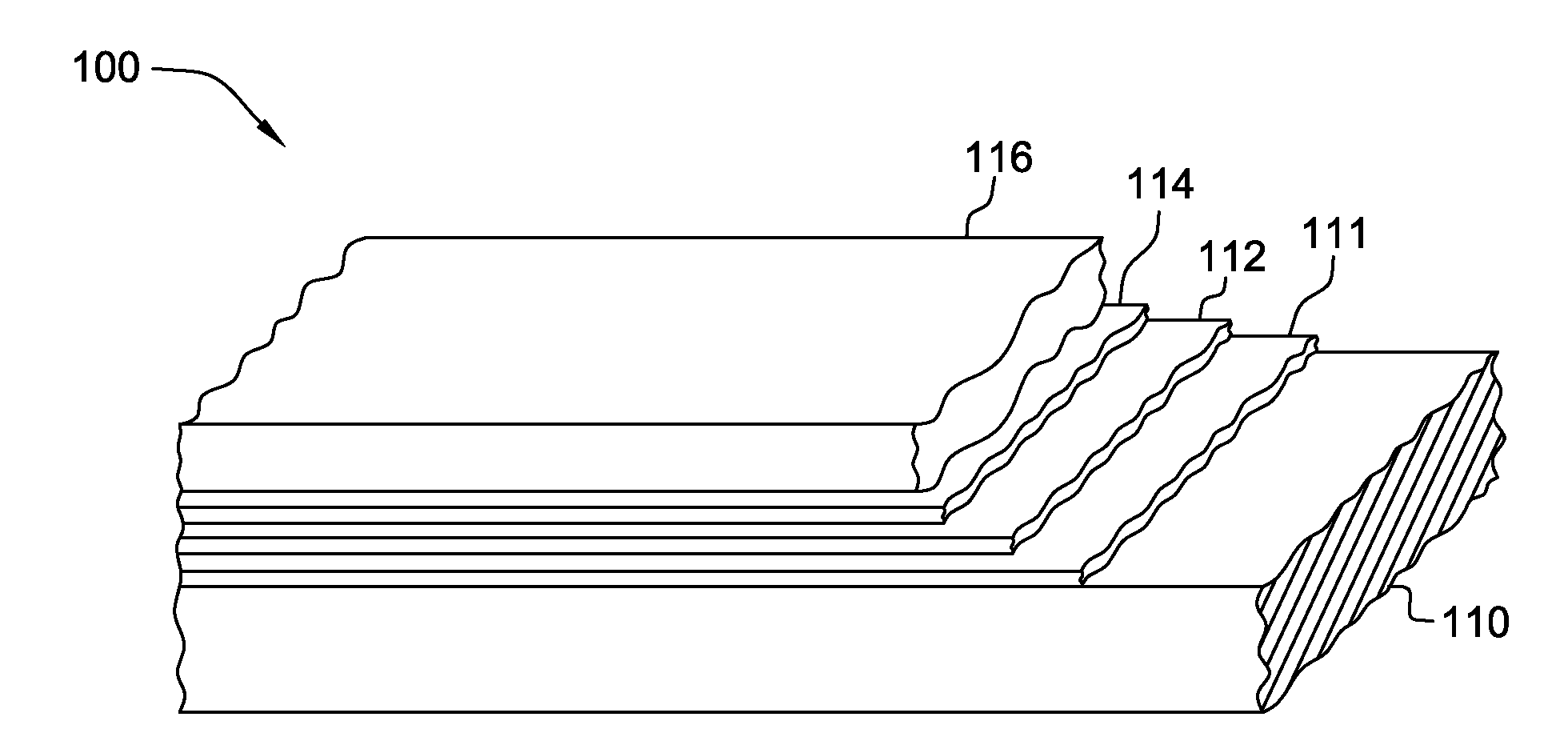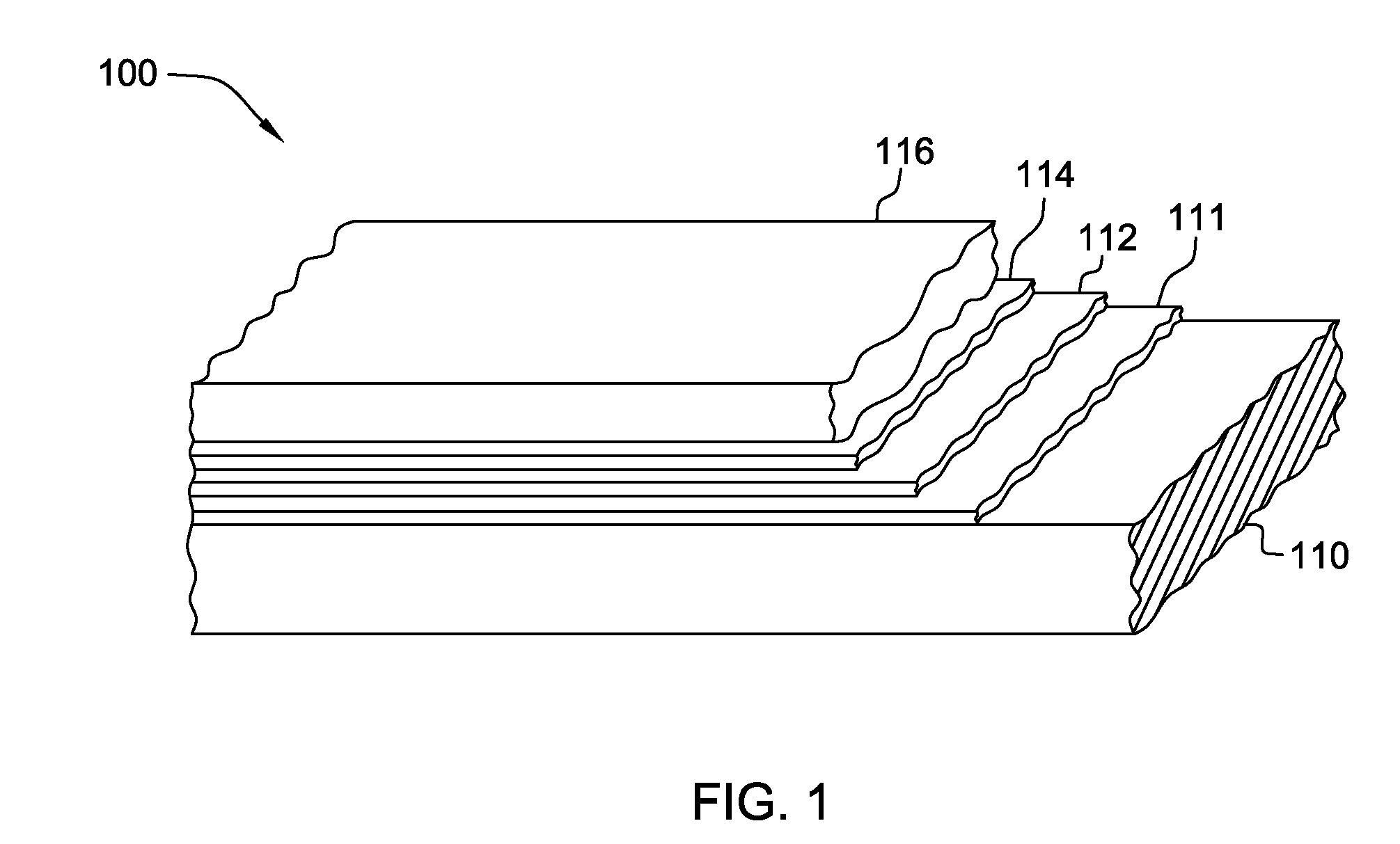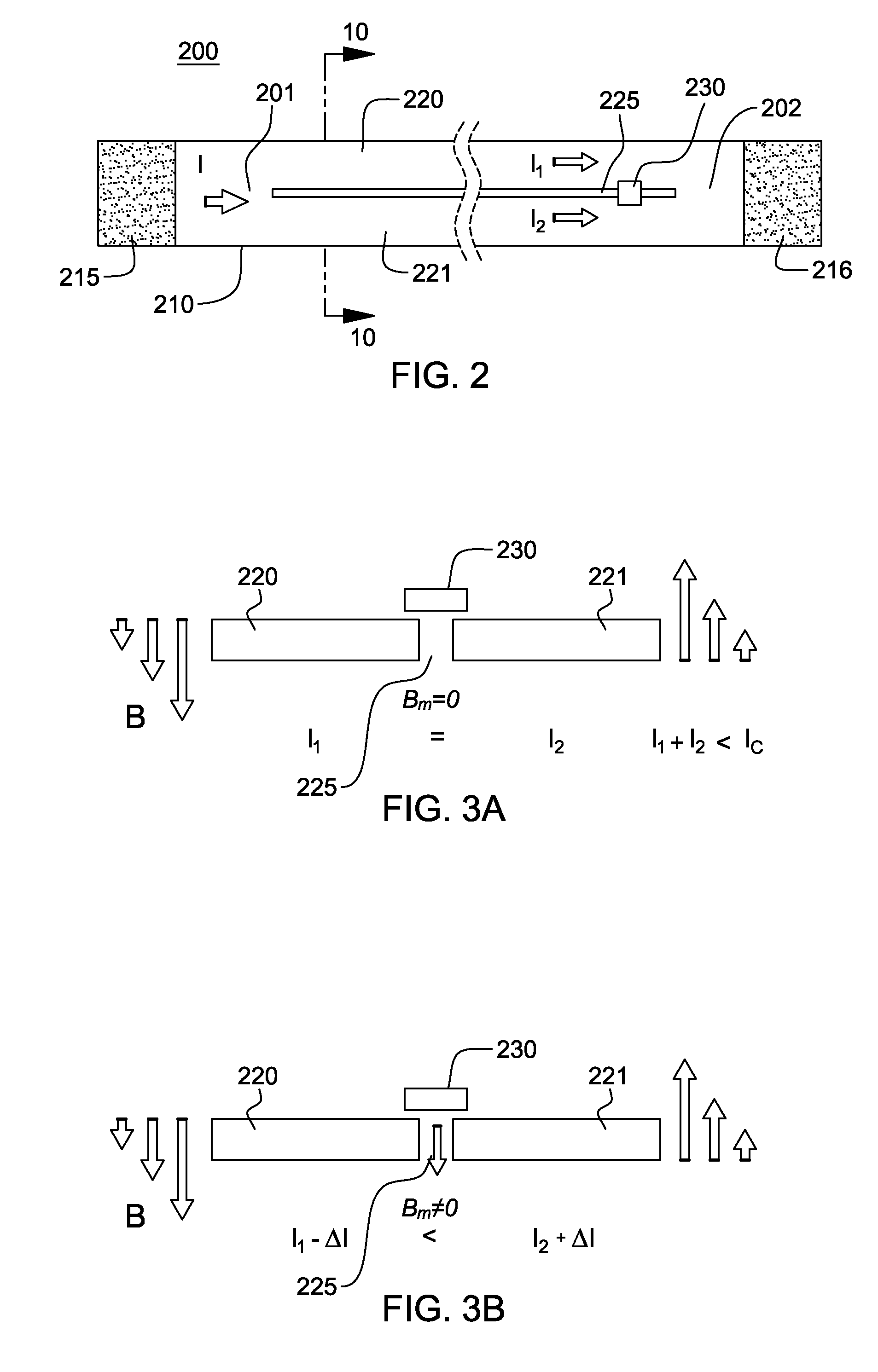Early quench detection in a superconducting article
a superconducting and early quench detection technology, applied in the direction of superconductor devices, normal-superconductive switchable devices, emergency protective arrangements for limiting excess voltage/current, etc., can solve the problem of slow thermal instability development, detection and management of superconducting devices, and inhibiting its propagation along the hts conductor
- Summary
- Abstract
- Description
- Claims
- Application Information
AI Technical Summary
Benefits of technology
Problems solved by technology
Method used
Image
Examples
Embodiment Construction
[0031]Referring to FIG. 1, the general layered structure of an HTS conductor 100 is depicted which can be employed in a superconducting article, in accordance with the present invention. The HTS conductor 100 includes a substrate 110, a buffer layer 111 overlying substrate 110, an HTS layer 112, followed by a capping layer 114, (typically a noble metal layer) and a stabilizer layer 116 (typically a non-noble metal). In the embodiment depicted in FIG. 1, buffer layer 111, HTS layer 112, capping layer 114 and stabilizer layer 116 are collectively referred to as the superconducting region, which as illustrated, is disposed along one main surface of substrate 110. Note that in a fault current limiter application of a superconducting article such as described herein, stabilizer layer 116 would be omitted, with the superconducting region comprising buffer layer 111, HTS layer 112, and capping layer 114.
[0032]The substrate 110 is typically in a tape-like configuration, having a high aspect...
PUM
| Property | Measurement | Unit |
|---|---|---|
| length | aaaaa | aaaaa |
| length | aaaaa | aaaaa |
| length | aaaaa | aaaaa |
Abstract
Description
Claims
Application Information
 Login to View More
Login to View More - R&D
- Intellectual Property
- Life Sciences
- Materials
- Tech Scout
- Unparalleled Data Quality
- Higher Quality Content
- 60% Fewer Hallucinations
Browse by: Latest US Patents, China's latest patents, Technical Efficacy Thesaurus, Application Domain, Technology Topic, Popular Technical Reports.
© 2025 PatSnap. All rights reserved.Legal|Privacy policy|Modern Slavery Act Transparency Statement|Sitemap|About US| Contact US: help@patsnap.com



